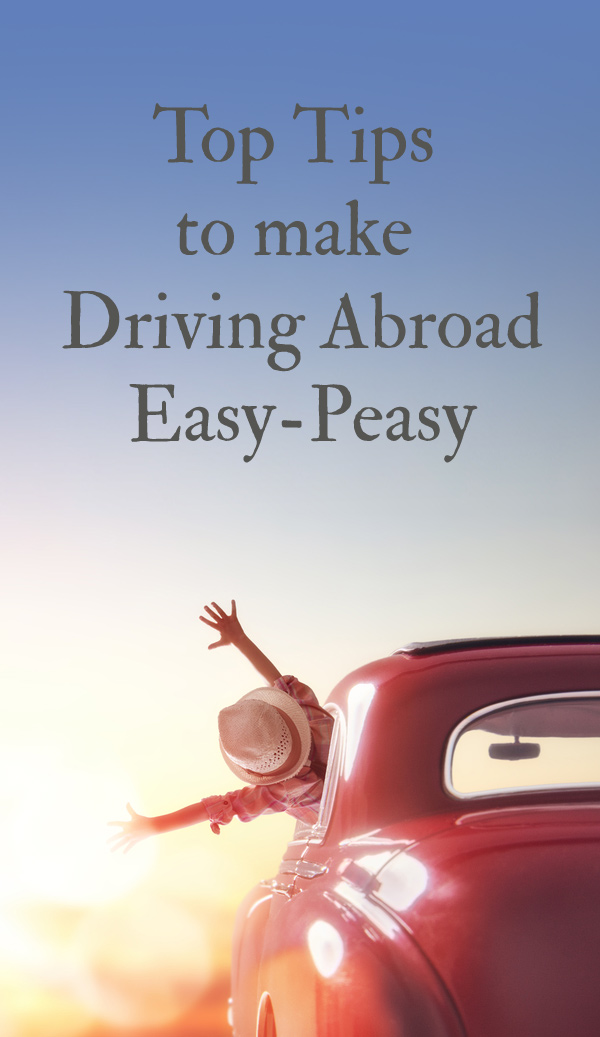Just 18mths ago we had the family road trip of a lifetime – a monster 4,000 mile road trip in a motorhome, driving from home in Dorset right across France and around as much of Italy as we could possibly manage to cover. We were no strangers to driving abroad, though, having opted for driving holidays as the best option for many years. To be fair, when I say ‘we’ I’m being a bit loose with the term. I tend to let Mr LittleStuff do the driving abroad – I’m far more cautious, and he just loves it. Plus, I’m a MUCH better navigator ;).

Family Road Trip image courtesy of Shutterstock
If you’re going further and planning to fly, then you won’t be taking your car with you (they’re tricky to get in a suitcase, we find) but hiring one when you get there, of course. Make sure you check with a comparison site like Holiday Autos first (a car rental comparison website, they search more than 30,000 locations worldwide, compare prices from over 1,500 suppliers – major car rental companies plus independent local suppliers – and find you the best price. You don’t want to be doing that searching yourself, you have sunglasses to be choosing after all…)
I clearly remember the first time we planned a European road trip. We were simply heading straight across France to a villa for a couple of weeks – but we felt a great deal of trepidation about venturing onto those foreign roads all by ourselves with no grow up in charge (yes, yes, we had four children by then, but pfffft. We all want a grown up around). When we actually set our tyres on French soil, however, we soon found that my neurotic preparations really helped, and our confidence grew by the minute. And now we positively look forward to the freedom we have with a vehicle of our own for exploring when we’re away.
So here’s our Top Tips For Stress Free Driving In Europe
- First, check the kit you need – France requires you to carry a breathalyser kit, for example, and most European countries insist on you having fluorescent jackets and triangles in the car at all times. You’ll need those weird opaque stickery things on your car headlights to make sure you’re not blinding all oncoming vehicles too – make sure you buy the right ones for your car. None of it is expensive or hard to come by, but checking first is important.
- Next, check the driving laws. You need to stick to the speed limits (and note that there’s often different speed limits in the rain), and you need to be aware of even those obscure rules you probably haven’t heard of. You can’t drive in flip flops in Spain, for example. And in Italy you should only park in the direction of the flow of traffic (you’ll get crossly told off by a local in a long stream of flowing incomprehensible Italian if you disobey that one… *cough*). A really useful site for this is the AA, actually – the AA touring tips give you the essentials you need to be aware of for more than 40 countries.including information about compulsory equipment, local rules, use of lights, speed limits etc.
- Loose change and a card for unexpected tolls. I love the toll roads, and usually you take a ticket when you enter and pay when you leave. But sometimes it’s the other way round. Most take a debit/credit card, so keep yours within easy access – but a handy pot of Euros can be useful too!
- Be ready for a different style of driving. We in the UK are very good at Sticking To The Rules. But the Italians tend to drive like the rules of the road are just a suggestion (we navigated one junction on the Rome ring road at rush hour which allegedly had 3 lanes each way – we counted at least 11 lines of cars, with others at various odd angles, all cheerfully working their way through). Travel’s brilliant for experiencing new cultures, and the way they drive is no exception. Don’t get cross that they don’t drive in a more British fashion – just go with it!
- Think right! It’s so easy to forget to drive on the right, particularly when you’re doing something really familiar like leaving the supermarket or petrol station. Straight off the ferry is another one the husband is often found muttering “keep right, keep right” to himself for the first few minutes. Your drivers brain is well-trained to stay left, so don’t lose concentration!
- Take a real map. Sat navs are fab at helping navigate strange roads and get you to your destination. But sometimes you don’t just want to get from A to B. Sometimes you want to explore. or know what that place is you can see in the distance. And as we found on a particularly long hot drive, there’s always the risk that your sat nav will simply get too hot on the dashboard and sulk silently and blackly for an hour (usually just as you’re approaching the end of the autoroute…).
- Insurance. Check your travel and car insurance covers you adequately, and if you are unfortunate enough to be involved in an accident, contact your insurer immediately. It’s the same as the UK – obtain the other driver’s full details together with the names and contact details of any witnesses. And DO remember to take photographs of any damage, plus the scene itself.
- Relax! Between cities the roads are much emptier than our crowded British ones. Enjoy driving with space, exploring back roads where you’ll rarely see another vehicle – and if you find yourself in one of those quiet country lanes with empty road stretching before and behind you, then do take a minute to just stop and switch off the engine. The ensuing silence is ridiculously beautiful.
Pin It For Later


